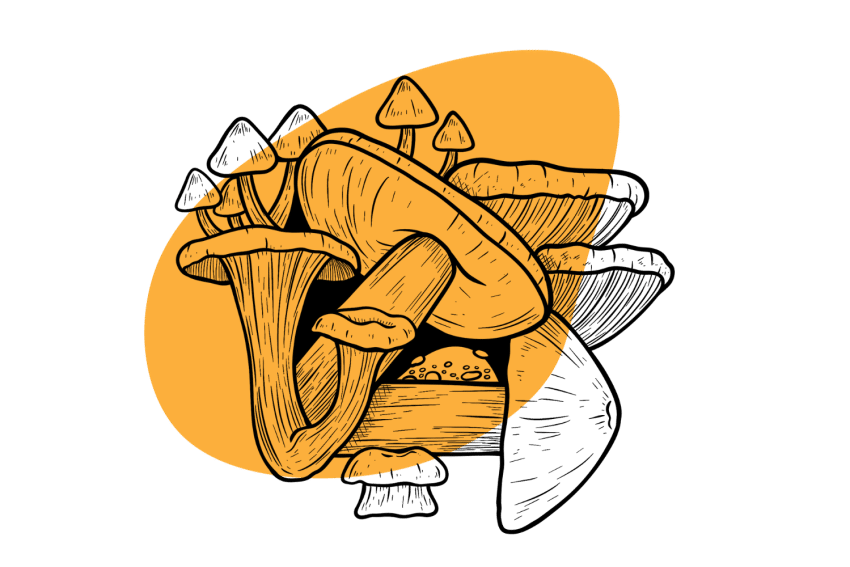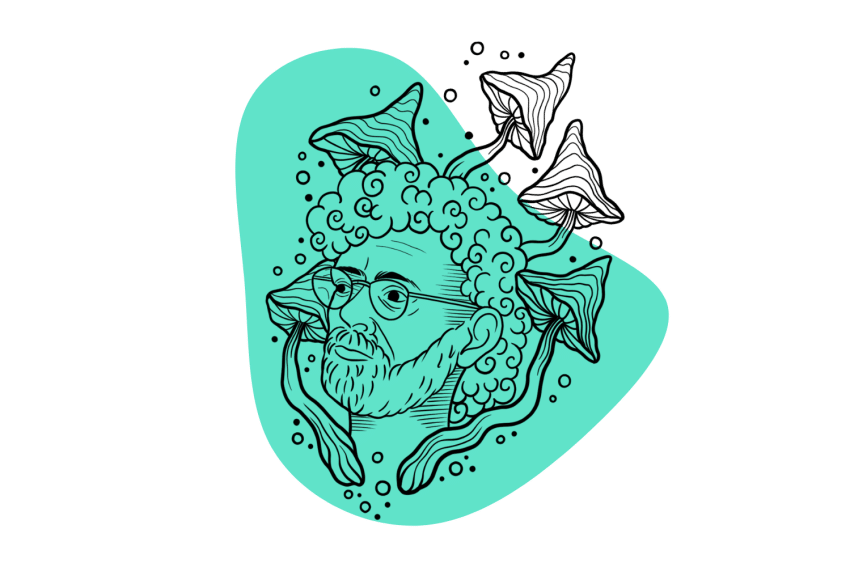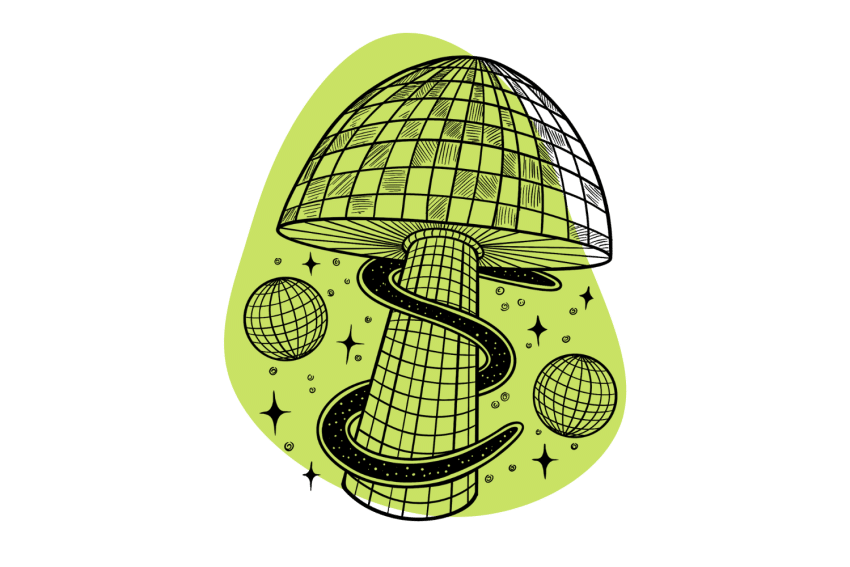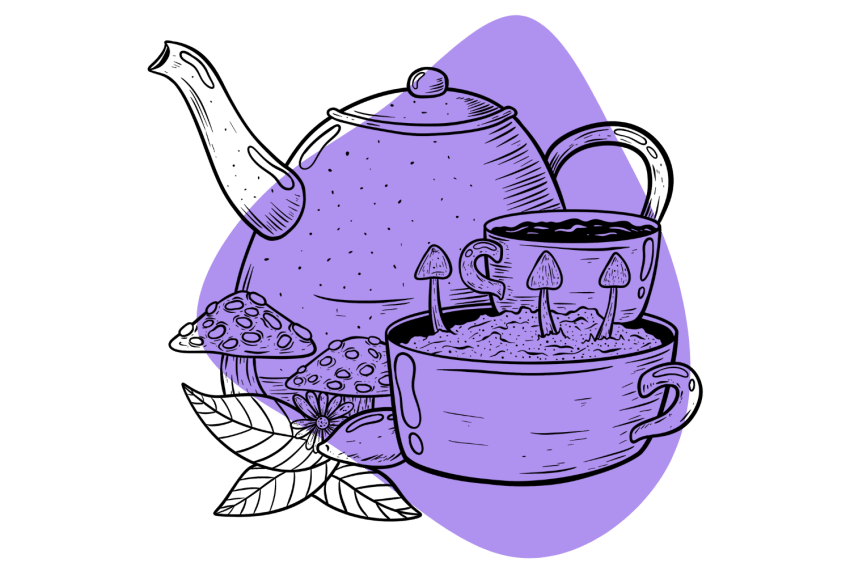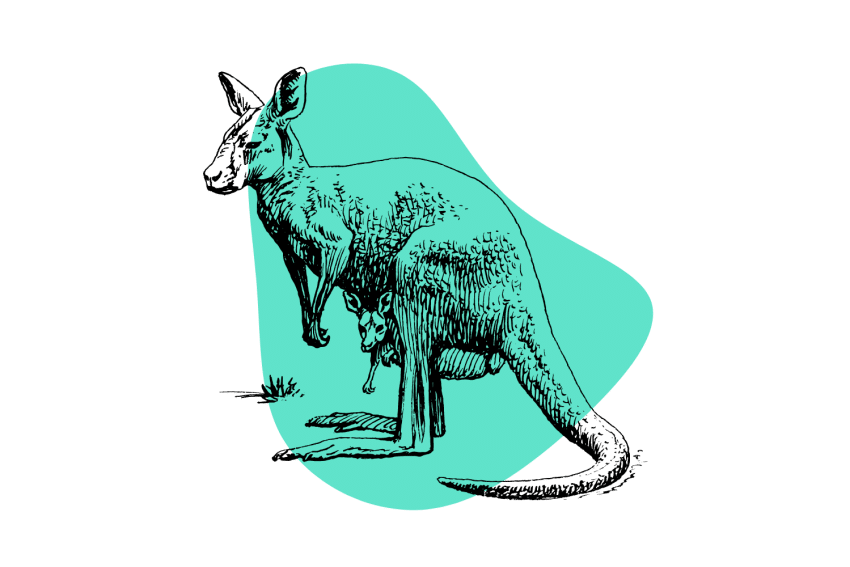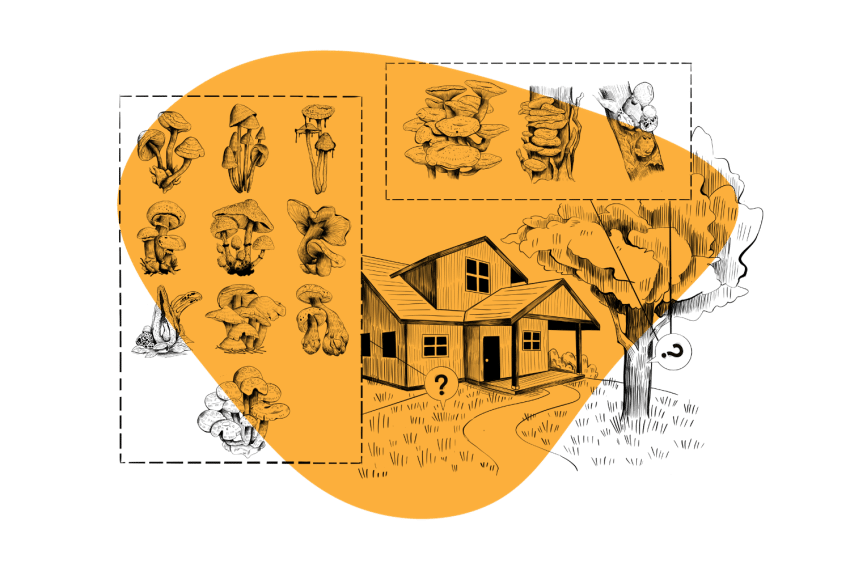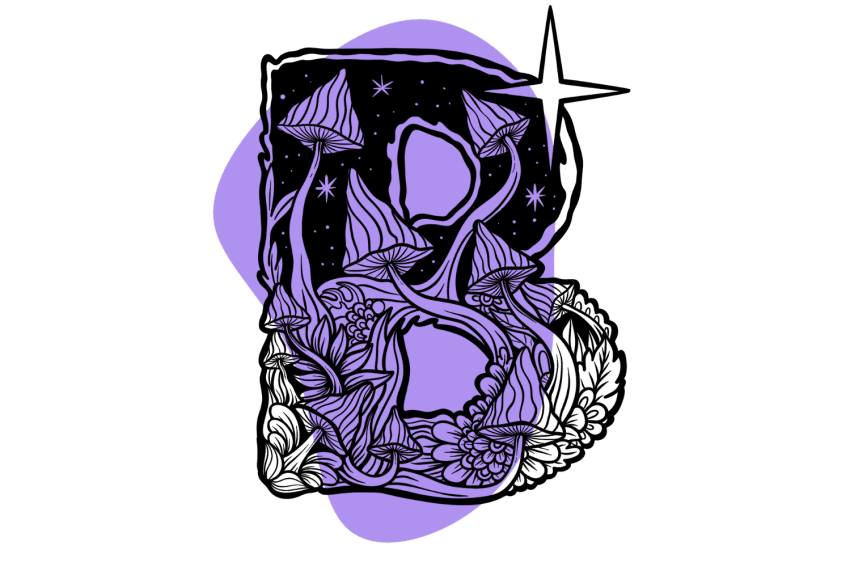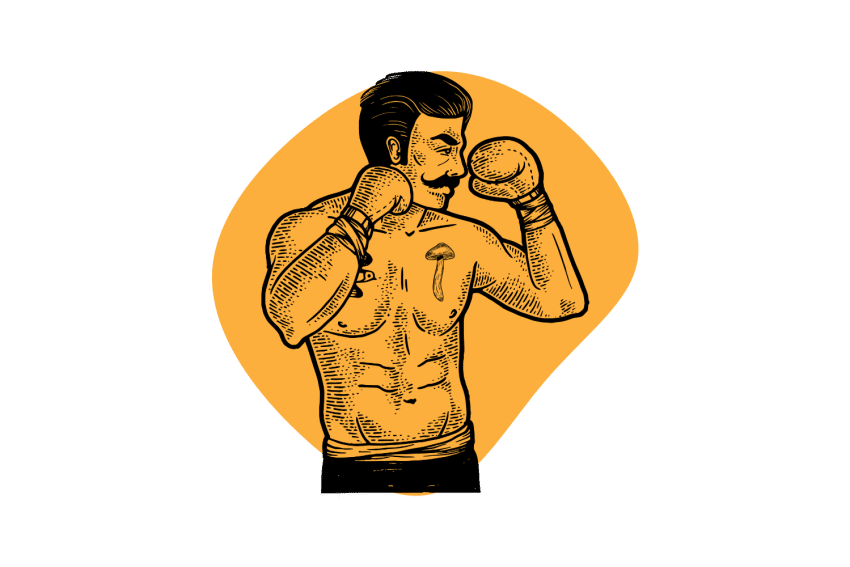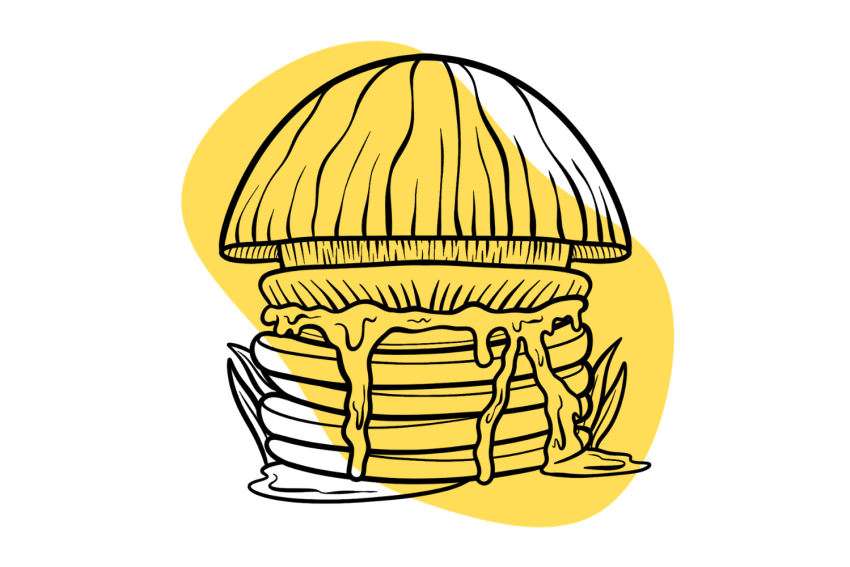How Strong is the Average Magic Mushroom?
The average magic mushroom species contains around 0.97% psilocybin, psilocin, and baeocystin combined. The average (dried) Psilocybe cubensis strain is between 0.5% and 0.9% total tryptamines.
Magic mushroom is a term used to describe any mushroom with psychedelic effects — there are more than 130 species of mushrooms that fit this description.
However, when most people talk about magic mushrooms, they’re referring to different strains of just one species — Psilocybe cubensis.
The active ingredients in all of these mushrooms are psilocybin and psilocin. Some scientists include baeocystin on this list as well, but its effects are much weaker, and it is contained in much lower concentrations in these mushrooms.
So, how strong is the average magic mushroom?
- The average potency of magic mushroom species is 0.97% total tryptamines — This puts species like Panaeolus cambodginiensis (1.15%), Psilocybe tampanensis (1.00%), and Psilocybe weilii (0.88%) as the most average psychedelic members of the group.
- The average potency of magic mushroom strains (Psilocybe cubensis) is around 0.80% total tryptamines — Strains with total tryptamine levels in this range include such members as Acadian Coast, Albino A+, Jack Frost, Golden Teachers, and Koh Samui.
Breaking this down further, we can determine that the average psilocybin content of magic mushroom species is 0.63%, the average psilocin content is 0.34%, and the average baeocystin content is 0.11%.
It’s important to note that the active ingredient profiles of magic mushrooms vary substantially from one sample to the next. These figures are based on as much analytical data as we have available — but we admit these findings are not definite. Factors like growing conditions, time of the year, storage conditions, and individual epigenetic factors all play a role in how potent a give magic mushroom sample is.
The Potency of Magic Mushroom Species
There are hundreds of individual species of magic mushrooms spanning six different genera. Each of these genera contains several species that contain either psilocybin, psilocin, or a combination of the two. These include Psilocybe (95 species), Panaeolus (13 species), Gymnopilus (11 species), Pluteus (4 species), Conocybe (4 species), and Inocybe (3 species).
Psilocybin is converted to psilocin inside the body, which leads to the characteristic psychedelic effects these mushrooms are known for. Its effects on the 5HT2A (serotonin) receptors induce feelings of euphoria, stimulation, and of course, visual and audible hallucinations.
How Strong is Your Average Psilocybe cubensis Shroom?
Psilocybe cubensis (AKA “Cubes”) is the most common and popular species of psilocybin-containing mushrooms. This mushroom species prefers growing in tropical and subtropical climates but is extremely easy to cultivate indoors compared to other Psilocybe species. This ease of cultivation is the main reason why this mushroom is so popular today.
This is the species that you’re most likely to come across if you know someone that grows magic mushrooms.
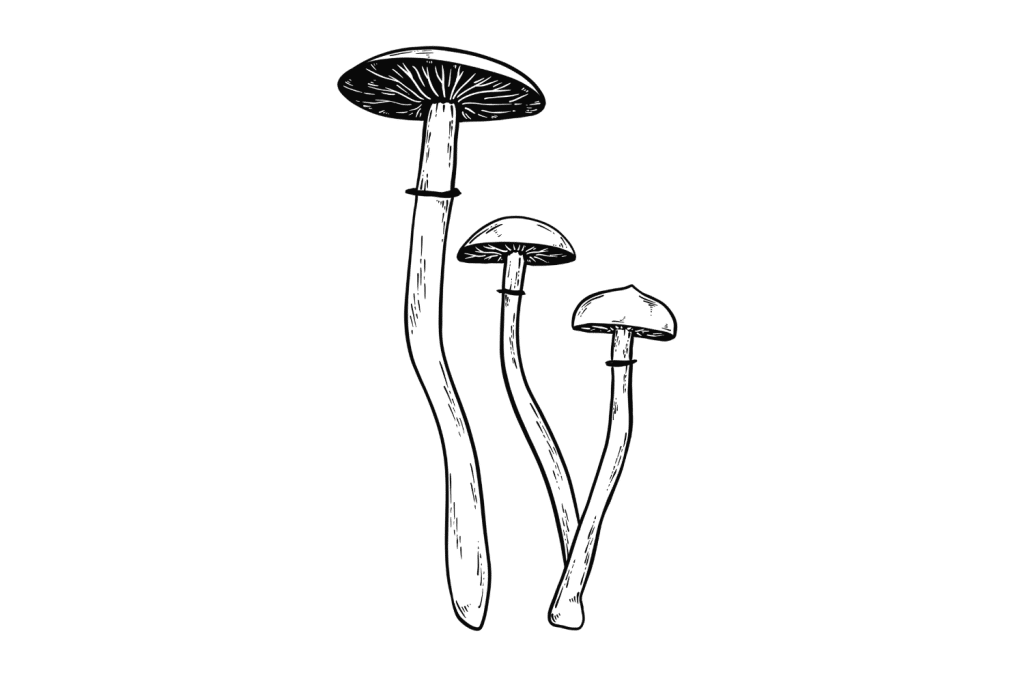
Hundreds of strains of Psilocybe cubensis exist. Some of these strains have been discovered in the wild and have been domesticated and distributed via spore samples. Other strains are the result of cross-cultivation — a process where two genetic samples are essentially combined to create strains with new traits.
Fresh Psilocybe cubensis typically contains about 1.23% total tryptamines. When the mushrooms are dried and stored, the psilocin levels drop dramatically (usually around 0.77%).
The psilocin degrades, leaving behind the more stable psilocybin, baeocystin, and a few trace tryptamine compounds. Therefore, most of the Psilocybe cubensis people consume contains somewhere between 0.5% and 0.9% total tryptamines.
Penis Envy is one strain that’s the result of cross-cultivation. This strain produces abnormally high psilocybin levels and unique visual characteristics.
Apart from Penis Envy and its many derivatives, most Psilocybe cubensis strains have fairly similar psilocybin levels. Sure, some strains are more potent than others but generally speaking, psilocybin levels sit in the range of 0.41% to 0.63%.
A typical Psilocybe cubensis strain, such as Golden Teacher or Koh Samui, has an average psilocybin level of around 0.70% and a total tryptamine content of around 0.80%, according to recordings from the Oakland Hyphae Psilocybin Cup.
In terms of magic mushroom strength compared to other species, this puts your average Psilocybe cubensis shroom somewhere in the middle.
List of Psilocybe cubensis Strains Considered to Have Average Potency
We classify any strain that consistently tests within the range of 0.5% to 0.9% combined psilocybin and psilocin.
How Strong is the Average Liberty Cap (Psilocybe semilanceata) Shroom?
Psilocybe semilanceata, commonly known as the Liberty Cap mushroom, is a small species of psilocybin-containing mushroom that grows in northern climates. The species can be found in fields and pastures across Europe, the United States, and Canada.
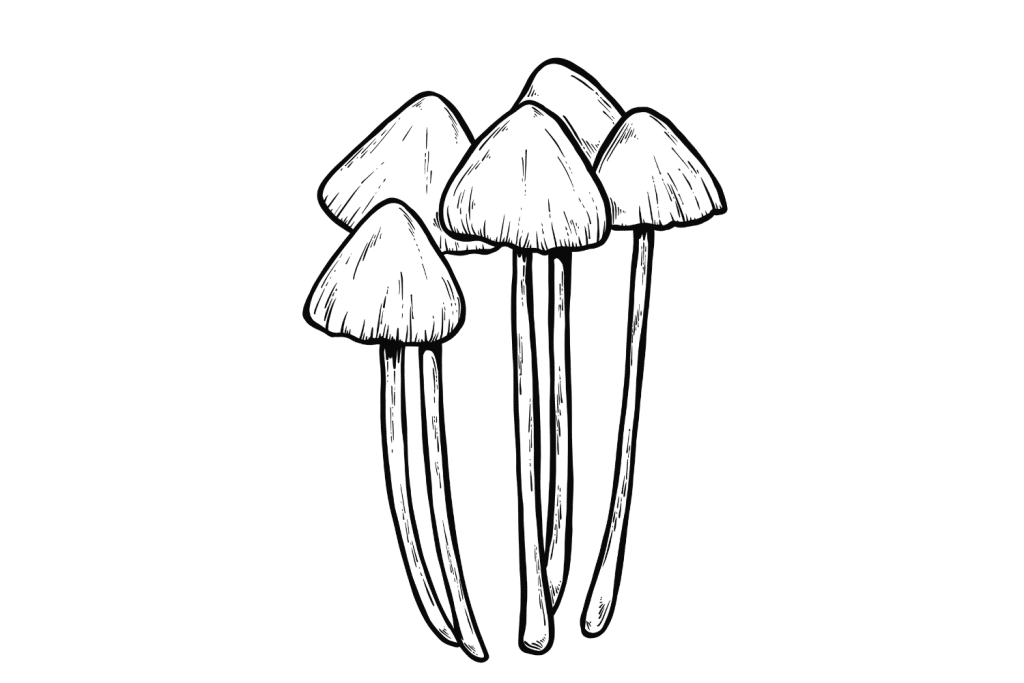
This common field mushroom may be small, but don’t let its minuscule stature fool you — the Liberty Cap shroom packs a punch. This small but mighty mushroom can contain psilocybin & psilocin to percentages up to 2.00% (in dry weight), which is nearly three times as potent as your average Psilocybe cubensis mushroom.
This is a popular species in Europe, where it grows in abundance during the autumn months from late August to November (depending on how north you are).
Although P. semilanceata is a potent species of psilocybin-containing mushroom, due to its wild and untamed nature, potency can vary greatly from shroom to shroom. This can make it difficult to work out doses because one shroom can be significantly more potent than the next.
Most reports suggest that P. semilanceata has a functional range of 1.70 to 2.00% tryptamines. Tjakko Stijve and Thom Kuper tested a single Liberty Cap specimen back in 1985 that showed a concentration of psilocybin at 1.70% [1]. However, several other reports show conflicting data.
A paper titled “Occurrence and Use of Hallucinogenic Mushrooms Containing Psilocybin Alkaloids” displays the potency of Liberty Cap samples taken from across the globe [2].
In the paper, psilocybin percentages were taken from samples in Finland, Sweden, Norway, Germany, Serbia, the Czech Republic, the United Kingdom, Canada, and the United States, among others. Readings of 0.20 to 2.37% can be noted, with the average potency (dry weight) being around 1.00%.
How Strong is the Average Wavy Cap (Psilocybe cyanescens) Shroom?
Psilocybe Cyanescens, commonly known as the Wavy Cap mushroom, is a psilocybe species that grow on wood. This mushroom grows on rotting wood, mulch, and deciduous wood chip in many parts of Europe, the United States, and parts of Canada.
The potency of this mushroom is slightly above-average at around 1.21% total tryptamines (dried weight).
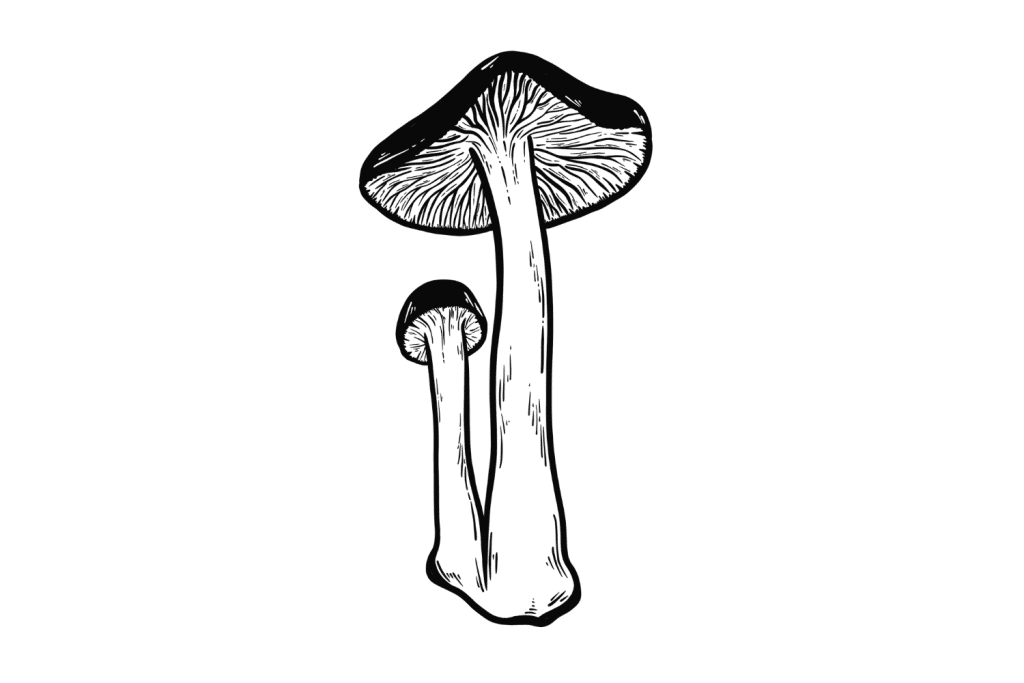
Other samples of this mushroom obtained from the Czech Republic registered psilocybin levels of up to 1.80% or more. A paper looking into the potency of this species was written by J Stríbrný, J Borovicka, and M Sokol (three Czechian scientists) found that psilocybin concentrations in Wavy Cap samples ranged from 0.13 to 1.84% [3].
The potency of Psilocybe cyanescens seems to vary from one mushroom to the next, making it difficult to gauge doses accurately.
The reason for the wide variation in potency of this magic mushroom species is unknown. However, the substrate the mushroom is extracted from seems to impact the psilocybin levels. The acidity of the substrate the species grows on is believed to affect the alkaloid content within the mushrooms.
The location of the mushrooms may also be a factor that affects the overall potency of the mushrooms. For example, samples discovered in the Pacific Northwest by Beug and Bigwood have produced psilocybin levels upwards of 1.68% [4].
Other P.cyanescens samples collected from Europe by T Stijve and T W Kuyper have produced psilocybin levels of 0.80% or less [5].
Overall, the average potency of this mushroom species is considered strong, but due to the variation in psilocybin and psilocin levels from shroom to shroom, it’s hard to gauge exactly how potent the mushrooms you’ve collected will be.
How Strong is the Average Psilocybe azurescens Shroom?
Psilocybe azurescens is famed for its exceptional potency. This species is recognized as the most potent species of psilocybin-containing magic mushrooms on the planet. The total tryptamine levels of this mushroom have been reported at around 2.16%.
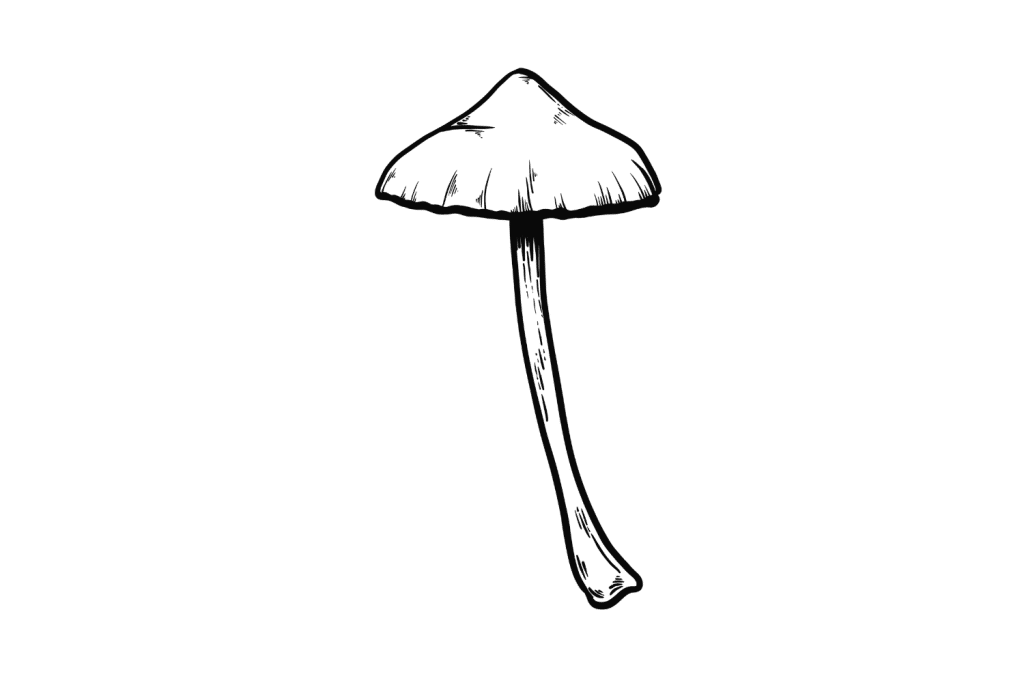
According to a 1996 publication written by Paul Stamets and Johan Garts, P.azurescens can produce fresh-weight psilocybin levels as high as 1.80% and a dry-weight psilocybin percentage of 1.10% [6].
To put that into perspective, the average Psilocybe cubensis mushroom produces an average fresh-weight psilocybin level of around 0.42%. This makes the “average” psilocybe azurescens mushroom roughly four times as strong as the average cubensis shroom.
P.azurescens is said to be extremely visual and spiritual. The psychedelic trip this fungus can induce can be unbelievably intense. This is not a species for the beginner and should be treated with great respect.
How Strong is the Average Psilocybe mexicana Shroom?
Psilocybe mexicana, also known as the Mexican Liberty Cap due to its similarities to Psilocybe semilanceata, is a common variety of psilocybin-containing fungus. This species is popular for its psychedelic sclerotia that grow below the surface amongst the mycelium. Sclerotia are essentially tightly packed balls of mycelium growth — also known as truffles.
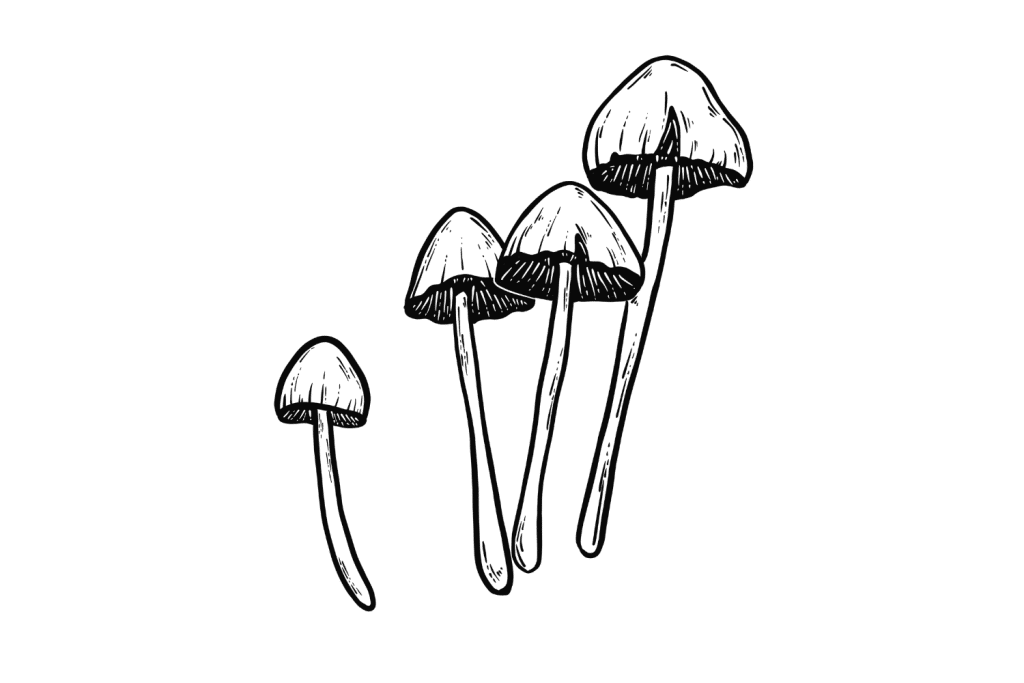
Both the magic truffles and mushrooms of Psilocybe mexicana contain psilocybin and can produce psychedelic effects when ingested. The potency of this species is below average, containing around 0.40% total tryptamines.
P.mexicana truffles are popular in Holland, where magic mushrooms are now illegal, but psilocybin-containing sclerotia remain legal to consume and sell.
Although loved for its ability to produce good yields of magic truffles, this mushroom species isn’t famed for its potency. Reportedly, P.mexicana mushrooms and truffles only produce psilocybin at levels of around 0.25%. That’s relatively weak in comparison to other mushroom species.
Contrary to the existing information on psilocybin levels, many people report having extremely intense visual hallucinations after consuming Psilocybe mexicana. There’s also very little in the way of solid scientific data to prove the exact potency of this species.
Psilocybe mexicana could contain far more psilocybin than is reported. Unfortunately, we won’t know the exact tryptamine content of this species until more thorough testing on a variety of different samples is undertaken.
This magic mushroom species have been used in healing and religious ceremonies in Mexico for centuries. It was one of the species that the famous curandera Maria Sabina used in her mushroom ceremonies and one of the first psilocybin-containing mushroom species to be brought back to the western world.
Mazatec mushroom ceremonies are considered extremely spiritual, and many people have reported having intense visual experiences in a trance-like state. This may not be thanks to Psilocybe mexicana specifically, but this is one of the most commonly used magic mushrooms in these ceremonies.
What is the Most Potent Species of Magic Mushroom?
The most potent recognized species of psilocybin-containing mushroom is Psilocybe azurescens.
This species has produced the highest percentages of psilocybin out of all currently documented magic mushroom species.
Some samples of Psilocybe azurescens have produced results showing psilocybin, psilocin, and baeocystin percentages as high as 2.16% — that’s phenomenal, especially when compared to your typical Psilocybe cubensis shroom (0.80%).
What is the Most Potent Magic Mushroom Strain?
According to the recent Psilocybin Cup results, a sample of Tidal Wave was listed as the most potent strain entered — with a total tryptamine level at a whopping 3.82% — nearly five times the average for this species.
The second-place title went to a sample of the Fuzzy Balls strain — which contained 3.00 total tryptamines, followed by Penis Envy in third place with 2.90% total tryptamines.
Keep in mind the amount of psilocybin and psilocin will vary substantially from one harvest to another, and the samples listed above were grown by professionals under optimal growing conditions. The potency of these mushrooms grown in a home lab is likely to be much lower.
If you frequent magic mushroom forums such as Shroomery, you’ll often read the phrase, “a cube is a cube except for Penis Envy.” This is because Penis Envy is in another league in terms of its recognizable characteristics and its exceptional potency. It’s not uncommon for amateur growers to produce Penis Envy mushrooms that achieve upwards of 1.65% total tryptamine levels. That’s more than three times what you can expect from your average Psilocybe cubensis strain.
Other strains bred from Penis Envy genetics include Albino Penis Envy, Penis Envy #6, Penis Envy Uncut, Melmac, Trinity, Sheppards Penis Envy, Old Dirty Penis Envy, Trans Envy, and White Rabbit.
References
- Stijve, T., & Kuyper, T. W. (1985). Occurrence of psilocybin in various higher fungi from several European countries. Planta medica, 51(05), 385-387.
- Andersson, C., Kristinsson, J., & Gry, J. (2009). Occurrence and use of hallucinogenic mushrooms containing psilocybin alkaloids. Nordic Council of Ministers.
- Stríbrný, J., Borovicka, J., & Sokol, M. (2003). Levels of psilocybin and psilocin in various types of mushrooms. Soudni Lekarstvi, 48(3), 45-49.
- Beug, M. W., & Bigwood, J. (1982). Psilocybin and psilocin levels in twenty species from seven genera of wild mushrooms in the Pacific Northwest, USA. Journal of ethnopharmacology, 5(3), 271-285.
- Stijve, T., & Kuyper, T. W. (1985). Occurrence of psilocybin in various higher fungi from several European countries. Planta medica, 51(05), 385-387.
- Gartz, J. O. C. H. E. N. (1996). Observations on the Psilocybe cyanescens complex of Europe and North America. Ann. Mus. Civ. Rovereto, 12, 209-218.

